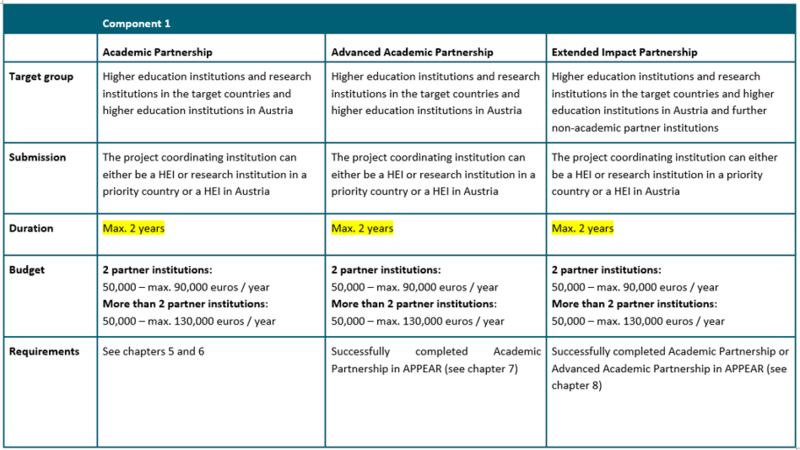11th APPEAR Call
The 11th Call closed on 31 May 2024.
The selection board meeting will take place at the end of November 2024. Applicants will be informed within two weeks after the meeting.
Guidelines | 11th Call
- APPEAR guidelines call11.pdf (1,5 MB)
- APPEAR budget guidelines partnership call11.pdf (202,3 KB)
Application forms | 11th Call
- APPEAR 11thCall Academic Partnership application.docx (114,9 KB)
- APPEAR 11thCall Academic Partnership application Albania Kosovo.docx (112,5 KB)
- APPEAR 11thCall Advanced Academic Partnership application.docx (111,0 KB)
- APPEAR 11thCall Extended Impact Partnership application.docx (112,0 KB)
- budget sheet partnership Call11.xls (52,0 KB)
Gender Mainstreaming
A detailed collection of gender mainstreaming material has been compiled which aims at supporting applicants and project partners in the inclusion of gender perspectives in their partnerships. Strategies, toolkits, articles, exemplary questions for the consideration of gender perspectives, etc.can be found there.
Diversity strategy
The APPEAR Diversity Strategy shall serve as a guideline to identify gender inequality during every programme and project phase, and to recognise the diversity among the population and especially among the programme's target demographics.
Project databases
OeAD.map - Map of OeAD projects and alumni
AERD - African Education Research Database
Research Earth - Map of Swiss research partnerships
